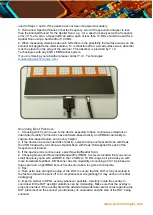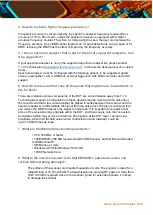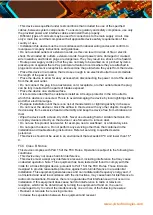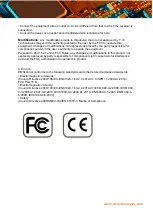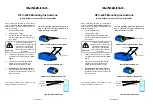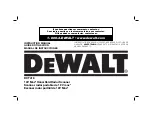
www.yictechnologies.com
c. Set up a separate module or project for your DUT and use the ‘Description’ portion of the
setup to quickly and easily identify the purpose of the scan.
d. Use the note facility for descriptions and possible explanations for emissions on the DUT.
This could come in very handy later when writing a follow up report.
e. If you already have visited a compliance facility and have a report, it is a good idea to
include this data in the notes and conduct the EMScanner scans at the same frequencies.
There will be differences in the far-field and near-field values, but they will be relative.
f. If the scan amplitudes are below 20 dBuV and the noise floor is high, use a low noise
amplifier (your own or one provided by Y.I.C. Technologies) and reduce the Resolution
Bandwidth.
g. We take measures to compensate for spectrum analyzer noise.
h. Make special note of low amplitude current loops that are coupling onto the connectors.
I Conduct Spatial Scans using continuous scan and peak hold at some of the frequencies of
interest, even if a Spectral/Spatial Scan was used. The Continuous Spatial with peak hold
will almost always provide a different picture than a single Spatial or a single User Spatial of
a Spectral/Spatial Scan (as all boards have time variances). The ability to capture time-
based events is a benefit unique to Y.I.C. Technologies.
j. If you have a very strong intentional radiator, it may be advantageous to either conduct
scans excluding this frequency (a scan below the frequency and a scan above the
frequency) or add a passband filter (customer-provided) that selectively excludes this
frequency.
k. If you are scanning very high amplitude intentional radiator an attenuator may be required.
Appendix – FAQ’s
1.
How can I correlate the scan results to PCB design?
2.
Does the system require annual calibration?
3.
What is the frequency and amplitude accuracy of the EMScanner measurements?
4.
How do I achieve higher frequency accuracy?
5.
I have a spectrum analyzer that is not on the list of supported analyzers, can it be
supported?
6.
How do I make sure that I see all the peaks that might cause me problems in the far-field?
7.
What are the Minimum System Requirements?
8.
What is the maximum power level that EMSCAN’s patented scanner can receive without
being damaged?
9.
How sensitive is EMSCAN’s patented scanner?
10.
I added a low noise amplifier (or an attenuator) between the scanner and the spectrum
analyzer and forgot to enter the value in the Amplitude Adjustment menu. Can I correct this
without rescanning?
11.
How can I find the frequency of an intermittent or random signal?














